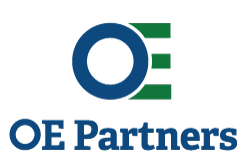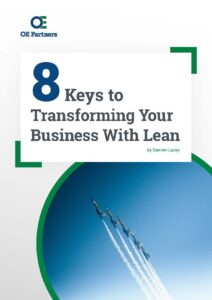All businesses can find value in taking a structured and systematic approach to organisational improvement but determining what that approach should be can require significant investigation.
In the decades since the Japanese economic miracle of the 1950s through the 1970s, many managers and business development experts have created various systems referred to as continual improvement processes (CIP) designed to assist organisations in achieving a range of outcomes.
Methodologies and outcomes differ, so it can be hard for business owners new to these kinds of systems to determine which is the one most suitable for them. Implementation can also be costly and time-consuming, meaning that seeing any kind of outcome requires commitment on the part of the organisation.
Whether you’re a new organisation looking to do things right from day one, or an existing company interested in refining your processes, let OE Partners guide you toward the right CIP methodology for your needs.
What Is the Best Continual Improvement Process Methodology?
No one to answer the question
Consultants are frequently asked what the ‘best’ CIP methodology is. In truth, the best CIP methodology is the one that best helps you achieve your objectives. Each methodology is diverse enough in its goals and processes that determining their suitability for your business is more a process of finding the one that suits your organisational objectives, culture and requirements best.
Consider the agile methodology as an example. One of the most popular and widely known CIP methodologies, agile, emerged from a specific context that makes it ideal for certain applications and unsuitable for others. Growing out of software development meant processes were relatively small, requirements were often flexible and changes to the product to be delivered were relatively inexpensive and quick to implement.
Where agile can potentially fall down is when these three factors are not in place, often in large organisations or in companies working in industries where production cannot be stopped after it has begun. While much work has been done to make agile more accessible to large organisations, in many cases these companies would be better suited by an alternative CIP methodology.
There are endless modifications and permutations, but alongside agile, the three most prominent methodologies are:
- Six Sigma – developed at Motorola and most famously used at General Electric under Jack Welch. Aims to minimise variability and defects in manufacturing and businesses processes.
- Lean management – grew out of the Toyota Production System which aided Toyota in becoming the world’s largest auto manufacturer. Identifies and removes ‘waste’ (everything from overproduction to excessive employee travel times) in large processes.
- Total quality management – Developed in response to and from study of the Japanese economic miracle by American and European firms. Primarily strives for continuous improvement of product quality as defined by customer requirements.
Defining your CIP Needs
As such, the first step for any organisation considering adopting a CIP should be to determine its needs and its objectives. How many people does your organisation employ? What does your organisation produce? What kind of margins does your organisation and your industry operate on? Regarding your goals, do you strictly want to minimise defects in mass production, or do you want to more broadly address organisational waste? The answers to these questions will guide your discovery process, helping you determine which CIP methodology best suits you.
Understanding your options
If you’d like to better understand the range of CIP methodologies in use and would like assistance implementing the most suitable one for your organisation, please start a conversation with an OE Partners consultant. Our knowledgeable staff are ready to help you.


